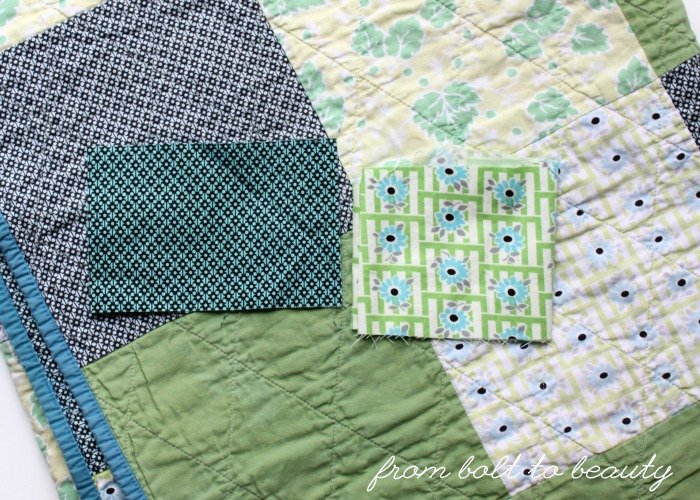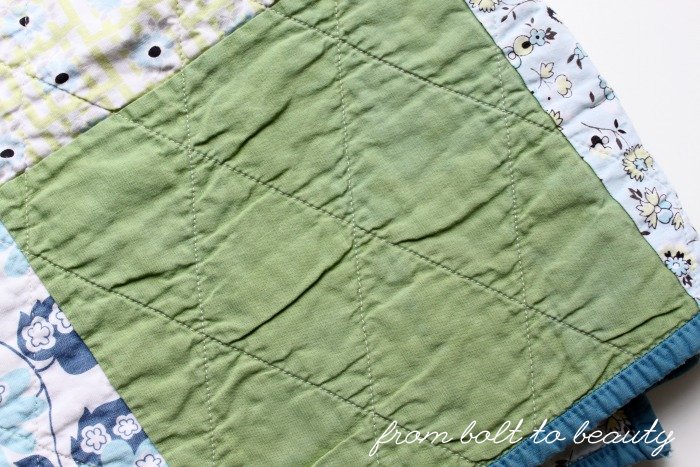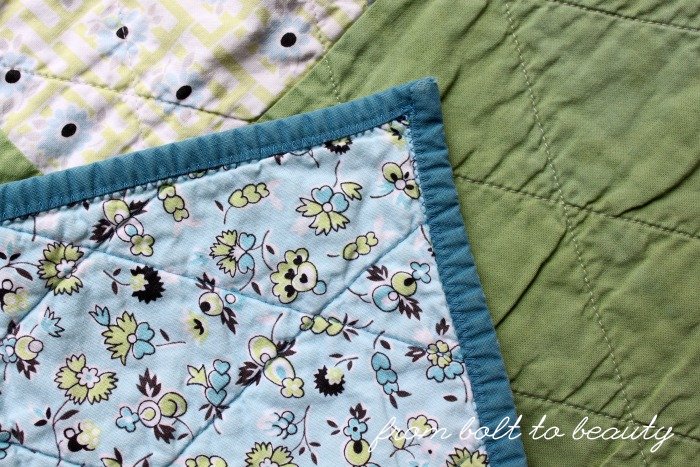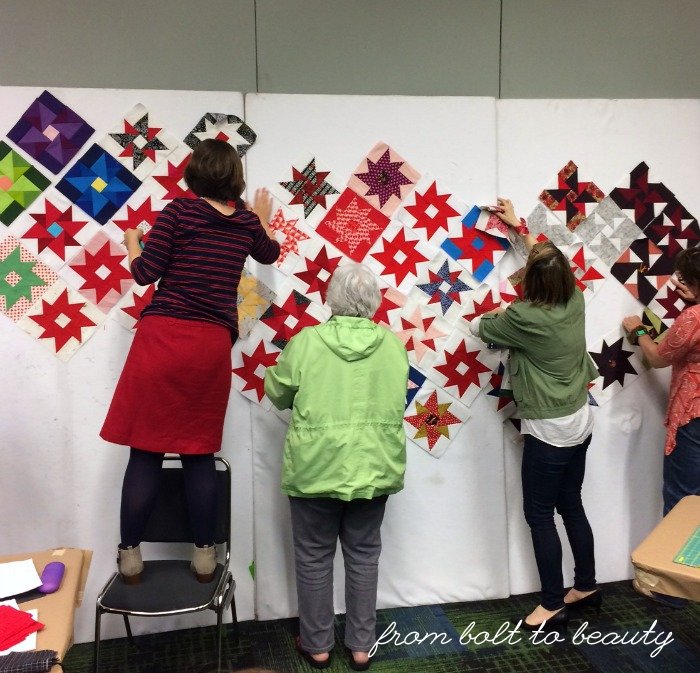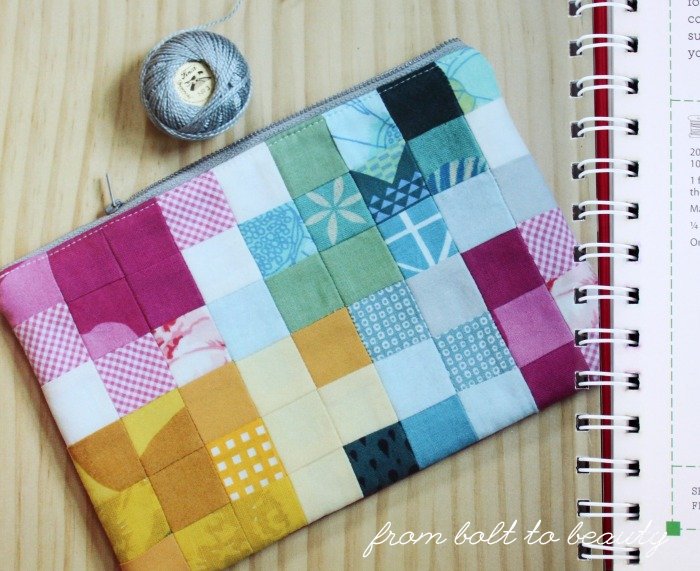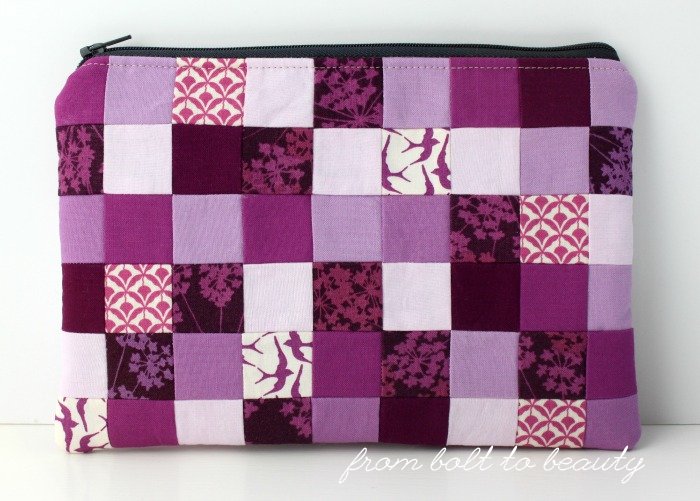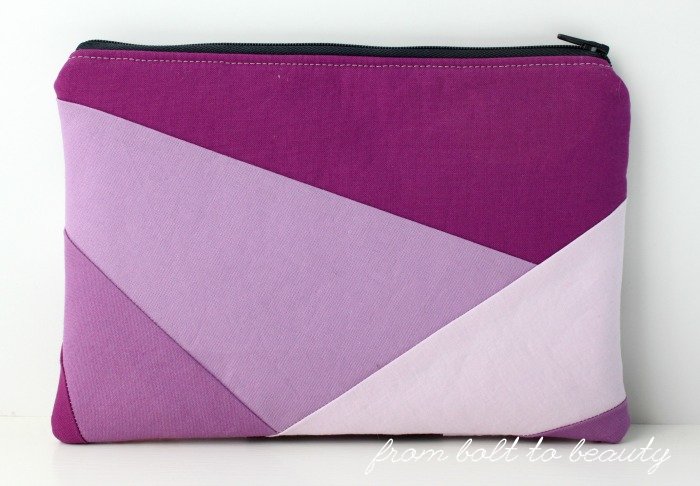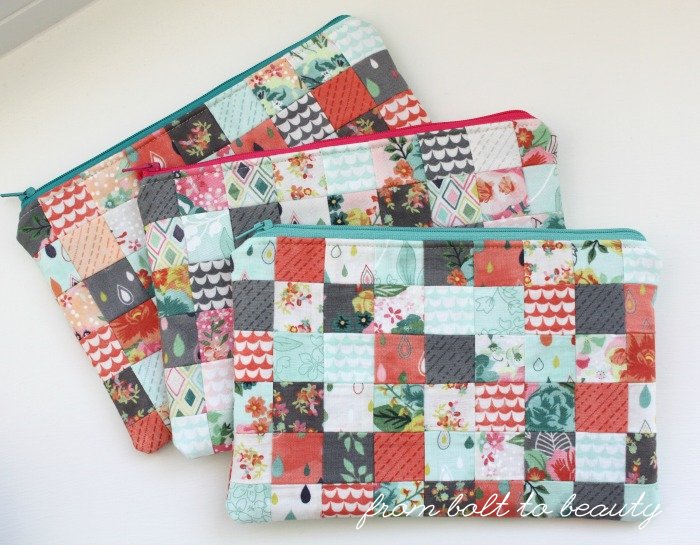I made my first quilt, a picnic blanket for a friend’s birthday, back in 2013. I thought it would be fun to ask her to borrow it for the meeting. Since it’s March in New England—and picnicking while there’s still snow on the ground isn’t fun—she said she could go without the quilt for a few days.
Wow. This quilt has been used and loved. I suspect it’s been spilled on countless times, and it has been washed and washed and washed. What reentered my life as a prop for show-and-tell, however, became a lesson on how my quilts hold up over time.
Here’s what I noticed ...
The Fabric
I wish I knew how many times this quilt went through the washer. I suspect it has been to the spa more times than all the quilts in my house combined. (I wash my quilts, all of which are used inside my house, only when absolutely necessary.)
I used two fabric lines for this quilt: Robert Kaufman’s Kona Cottons and DS Quilts, Denyse Schmidt’s line for Joann Fabrics. In addition to feeling almost leatherlike now, these fabrics are a shadow of what they once were. I’m not exaggerating! I don’t have scraps of the solids to use for comparison, but I do have some of the DS fabrics. Check this out ...
I wish I could return to 2013 long enough to give my friend a second quilt, made only from quilt-shop-quality fabric, and see how the two fared head-to-head after so many spills and so many washings. I suspect a quilt made of higher-quality fabric would fare better. How much better? I can’t say.
The Quilting
The quilting has held up well over time. I used a Gutermann neutral on the quilt top and an Aurafil blue on the back. (Wow—I’ve been testing the tension gods since day one. I forgot all about that!) The quilting lines look good. It seems as if I had some problems with puckering as I quilted this project, and those puckers combined with the regular washings create creases and uneven fading.
This is yet another reason to quilt my projects from the center outward—and bury all the many threads that result from that approach! It is also a reminder to loosen up my top-thread tension from the start of a quilting project.
The Binding
I don’t cut the strips for my binding on the bias, and I’m almost certain that was true four years ago, when I made this quilt. There is some noticeable wear on the binding, probably from all those trips through the dryer, but it’s not egregious. What’s more noteworthy, I think, is how I bound the quilt.
Back in 2013, I used a zigzag stitch to machine-finish my bindings. I’ve since abandoned that technique (I use this one instead) because I find it hard to stop and start again neatly and because I don’t think it’s as durable as a straight stitch. The zigzags here are in good shape, however. My eye is drawn to the messy spots where I had to take the quilt off the machine and restart my line of zigzags. Otherwise, it looks really secure, albeit a little wobbly. : )
The Batting
It’s true: cotton batting has a memory. I used a 100% cotton batting—either Quilter’s Dream or Warm and Natural—in this quilt. I still use 100% cotton products from those two brands of batting. Maybe I shouldn’t. It’s clear that my friend consistently folded this quilt on the same two lines horizontally and vertically because there are two permanent creases where the quilt looks looser, almost a little bubbly.
I know this quilt might not be the best example of how my quilts wear over time because of the amount of use and washings it’s had, but the batting lesson it teaches will give me pause the next time I want to commit to buying and using a bolt of 100% cotton batting.
Your Take on This
Have you had the luxury of examining your work on a quilt after years of use as I have? (I am convinced that I’m in the minority!) If so, what did it teach you?
Related links:
Linking up to Finish It Up Friday and Needle and Thread Thursday ...


